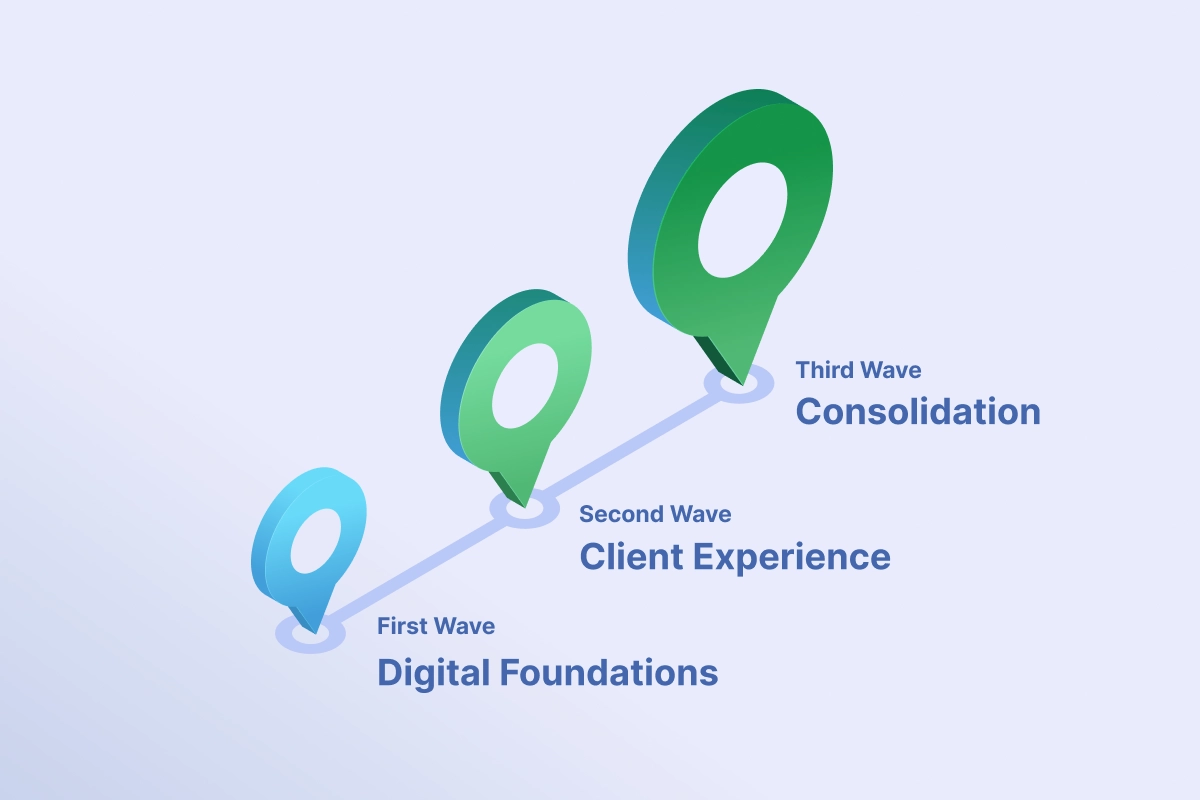We are at an inflection point in the life insurance industry, and now is the time for life insurance carriers to transform their technology and make their products more accessible to everyone. It can be difficult for large organizations to make meaningful changes to their platforms, but the short and long-term benefits can be substantial.
Life insurance carriers want answers to questions like, What more can we learn about our business? How have the market and field response to our product lines changed over time? But getting answers to these questions can be difficult on legacy or fragmented systems where the data is everywhere and often unusable.
The importance of modern cloud-native technology
Most life insurance companies sell more than one product. Diversified revenue is great, but companies are losing out on so much when every product relies on a different tech stack.
Think of it like smartphone apps. There are easily eight apps you want on your phone. But you’re not going to go out and buy eight smartphones for each app. Yet that’s how many Enterprises had been forced to set up in the older days of legacy systems. If they have eight products, each one has different billing systems, different contracts, different vendors, and on and on.
Not to mention, they’re requiring customers to interface with different platforms every time they want to consider a new product. And it’s not unusual for a customer to have to start the entire process over from scratch when trying to buy a second or third product from the same carrier, even when most of the questions are redundant. It creates unnecessary work for everyone, and a bad user experience for both the customer and distributors.
There are many incentives for life insurance companies to standardize onto one technology platform. Not only can it save money, it can help organizations get more out of their customer relationships. If a customer is purchasing more than one kind of life insurance, it’s easier to track their data if all of your products are using the same tech stack.
The power of cloud-native technology
Upgrading technology for your life insurance organization can be a huge undertaking, so you must be smart about it. After all, making such a big change can come with some risk. In 2023, you want your software to be cloud-native. There’s a considerable difference between cloud-native software versus just being in the cloud.
Cloud-native means the code is written in smaller blocks and orchestrated in smaller containers, and they work together almost like Legos. While this does not necessarily mean cloud-native technology is immune to bugs, it does mean that finding and fixing bugs is often much faster and easier, not to mention bugs are much more easily to be restricted to less severe types. With old systems, it can take days to find and repair a glitch — and time is literal money, with companies easily losing millions when they struggle with outdated systems.


FOMU: Fear of messing up
The business benefits of upgrading your life insurance technology are clear. So what’s holding people back? FOMU: Fear Of Messing Up. There is a perception that change can be risky. And there are lots of ways to mess up when you make changes to technology. You could introduce a new application and find your customers don’t adapt. You could also have an internal problem, where teams aren’t eager to make the change because they prefer the old way. Maybe there are concerns your distributors won’t like your new system. The what-ifs seem endless.
When FOMU takes over in a large organization, the easiest thing to do is nothing. The inertia is strong. It may seem risky to change something that seems to work, even if many people are unhappy with the current way it “works.”
While improvements in topline revenue and bottom-line cost savings may seem like obvious catalysts to change, there is another powerful factor to consider: competition.
Many life, health, and annuity product lines operate in extremely competitive markets, and when a few early adopters break the norm and offer a substantially better experience than their distributors and clients, there often are material movements in market share and operational efficiency.
Ultimately the goal is providing customers with the best user experience alongside a fair product setup. Investing in best-in-class life insurance technology at your carrier organization will ultimately result in happier customers and more productive agents to ensure life insurance carriers remain competitive in the space.
Conclusion
Ultimately the best experience in combination with a fair product setup almost always wins, both within and outside life insurance. It’s an exciting time for many companies in the space contributing to this effort, making innovative options available across the industry.
Interested in leveraging modern, cloud-native technology in your insurance business? Learn more about how iLife is cutting costs and boosting revenue for insurance carriers.





